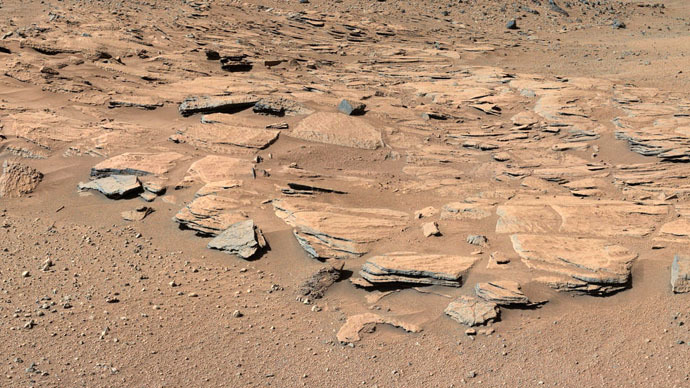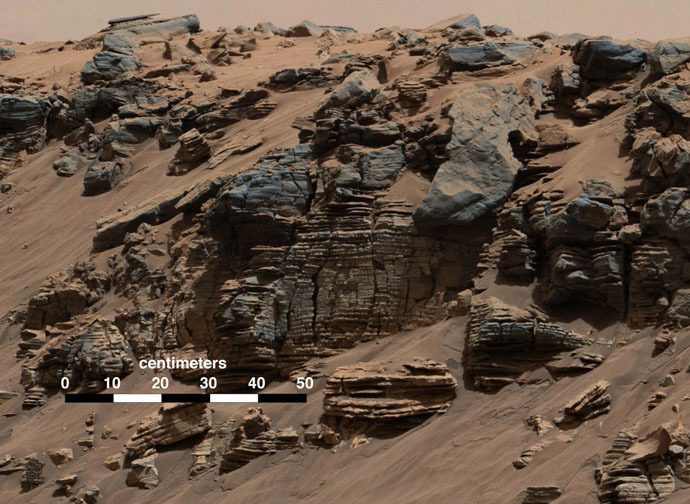Ancient Mars had massive lake, was potentially a wet planet

The landing site of the Mars curiosity rover robot, the Gale Crater, is believed to have once been a lake, NASA announced, presenting evidence that also suggests the lake existed for millions of years – potentially long enough to sustain life.
NASA’s Curiosity rover has been investigating the lowest sedimentary layers at Mount Sharp, a section of rock 500 feet (150 meters) high. Rivers carried sand and silt to the lake, scientists believe, depositing the sediments at the mouth of the river to form deltas similar to those found at river mouths on Earth. The latest observations suggest the mount was built by sediment deposited in a large lake bed of over tens of millions of years.

"If our hypothesis for Mount Sharp holds up, it challenges the notion that warm and wet conditions were transient, local, or only underground on Mars,” said Ashwin Vasavada, a Curiosity deputy project scientist at NASA's Jet Propulsion Laboratory in Pasadena. “A more radical explanation is that Mars' ancient, thicker atmosphere raised temperatures above freezing globally, but so far we don't know how the atmosphere did that."
READ MORE:Life on Mars? Carbon-containing meteorite from Red Planet restarts debate

NASA says it wanted to understand why the layered mountain sat in a crater. The rock layers – alternating between lake, river and wind deposits – suggest the lake was filled and evaporated repeatedly, suggested a long and more frequent cycle. If this latest interpretation is correct, ancient Mars maintained a climate that could have produced long-lasting lakes at many locations.
"The great thing about a lake that occurs repeatedly, over and over, is that each time it comes back it is another experiment to tell you how the environment works," John Grotzinger, project coodinator said. "As Curiosity climbs higher on Mount Sharp, we will have a series of experiments to show patterns in how the atmosphere and the water and the sediments interact. We may see how the chemistry changed in the lakes over time. This is a hypothesis supported by what we have observed so far, providing a framework for testing in the coming year."
READ MORE:Orion spacecraft splashes down after historic double-orbit mission

Since Curiosity’s landing in Gale Crater in 2012, the rover has made its way to the base of Mount Sharp, a 5-mile (8 kilometer) journey that has revealed clues about the transition on the crater floor.
"We found sedimentary rocks suggestive of small, ancient deltas stacked on top of one another," said Curiosity science team member Sanjeev Gupta of Imperial College in London. "Curiosity crossed a boundary from an environment dominated by rivers to an environment dominated by lakes."
Michael Meyer, NASA’s Mars Exploration Program lead scientist, said the knowledge about how Mount Sharp was formed will give clues to Mars’ environmental evolution and “help guide plans for future missions to seek signs of Martian life.”













